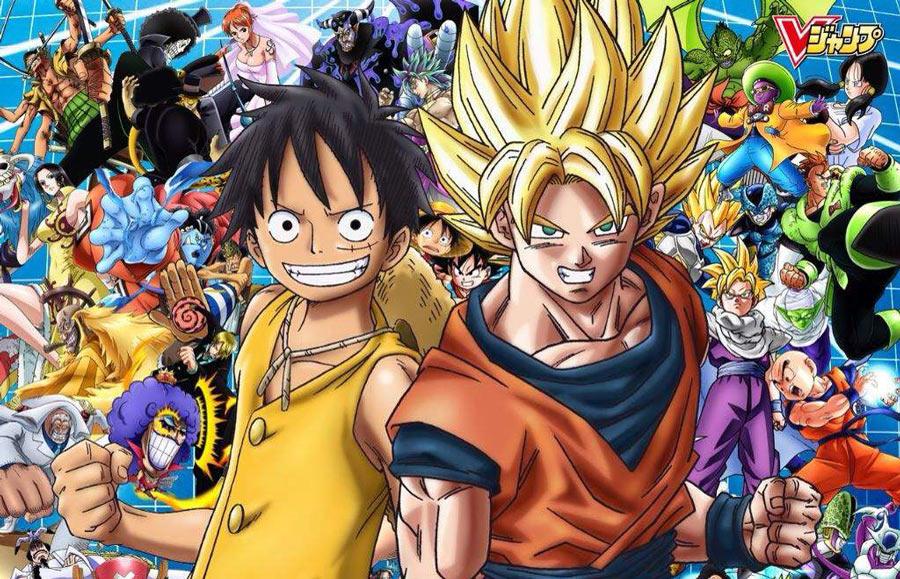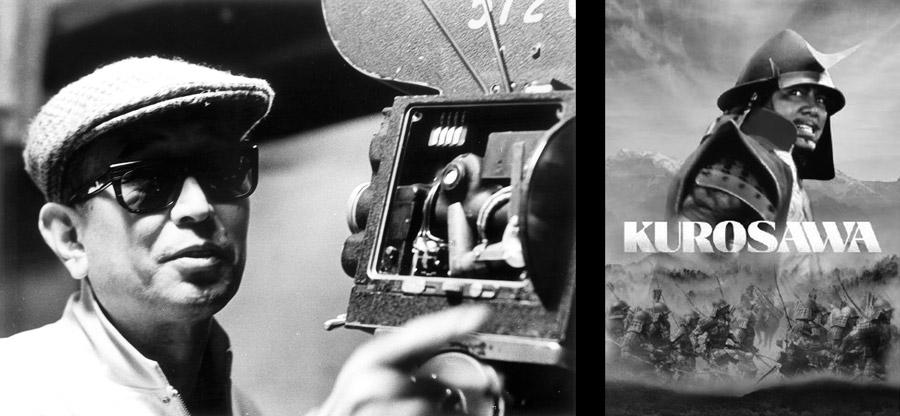Hollywood is known to rip off stories, but when it comes to Japanese cinema, it’s in a league of its own. Japan has given Hollywood some of the best movies in the past few decades. From blockbusters like The Ring and Godzilla, to cult classics like Battle Royale, you can see that Hollywood wouldn’t be what it is without Japan.
The Japanese film industry has been thriving for more than 100 years now. …or do they? Beneath the highly acclaimed films we know and love lies a Japanese movie that inspired Hollywood, enthralled award-winning filmmakers and impacted their scripts.
Here are our top 10 picks for the best Japanese movies that Hollywood has ever seen!
- Inception and Paprika
- Requiem for a Dream/Black Swan and Perfect Blue
- The Hunger Games and Battle Royale
- Kill Bill and Lady Snowblood
- The Matrix and Ghost in the Shell
- Avatar and Princess Mononoke
- Pacific Rim and Neon Genesis Evangelion
- Chronicle and Akira
- Seven Samurai/Throne of Blood and Star Wars
Inception and Paprika
Did you know that Inception, Christopher Nolan’s mind-bending movie is actually almost a direct copy of the 2006 Satoshi Kon masterpiece Paprika? Conceptually, both take a literal deep dive into the characters’ dreams, blurring the line between the two.
Both Inception & Paprika show the characters breaking into each others’ dreams, delving deeper and deeper using a machine created in order to positively or negatively influence the victim.
Like-for-like scenes are also seemingly visible, as in Paprika, a man is seen falling midway through a distorted hallway, while one of the most popular scenes in Inception is a fight in a hotel hallway with an ever-changing perspective. Nolan has actually praised Paprika itself in the past, so take that information how you will.
Requiem for a Dream/Black Swan and Perfect Blue
Satoshi Kon has definitely made an impact on some of the most renowned filmmakers of our time, as his 1998 classic Perfect Blue has influenced two of Darren Aronofsky’s films. Perfect Blue is a disturbing look into the life of an idol, whose abrupt career change has led to an obsessed fan impersonating her, making her slowly lose her identity.
Comparing this to Black Swan, Mima (whose name is suspiciously similar to that of Nina, the main character of the aforementioned Perfect Blue) is also a young, beautiful woman who works in the entertainment industry as a ballerina. Both have similar attitudes and goals in their careers, hoping to make it big while both being managed by an older male figure, both of which emphasize personal gain over the goals of their young performers.
In Requiem for a Dream, not only does did Aronofsky purchase the American filming rights to Perfect Blue so that he could film the bathtub scene in it. Aronofsky has stated multiple times that although Satoshi Kon is a big influence and inspiration to his films, they are not copies – despite the fact that he’s recreated a like-for-like shot in his movie. Again, take this how you will.
Being the progenitor of the death game formula, Battle Royale influenced many mediums with the one versus one hundred formula. The Hunger Games has been criticized in the past for being overly similar to the much-loved student gorefest that is Battle Royale, but author Suzanne Collins has vehemently denied claims about the direct inspiration.
Both movies have the exact premise of placing multiple kids in a deserted area in a kill-or-be-killed scenario where only one person survives and or wins the tournament. On top of this, The Hunger Games also features the element of romance present in Battle Royale, where the main hero and heroine help each other triumph through the craziness around them with teamwork, making some friends along the way to aid them into succeeding.
Kill Bill and Lady Snowblood
Continuing the gory theme of survival through murder are the two assassin flicks Kill Bill and Lady Snowblood.
In Lady Snowblood, Yuki, a child born through sexual assault trains to be an assassin to avenge the evil done to her mother.
In Kill Bill, the main character known as The Bride looks to seek revenge against Bill, who attempted to kill The Bride after she told him she was pregnant with his child. Although not entirely similar in plot, both mainly involve heroines who were forced off the beaten path by the main antagonist who they resolve to take revenge against.
The Matrix and Ghost in the Shell
So far, all the creators mentioned above have denied their Japanese influences. On the other hand, the Wachowski sisters, a pair of minds behind the Matrix & Animatrix movies fully embrace the influence of their multiple award-winning sci-fi mind-bender.
It is widely publicized that the sisters even showed a copy of Ghost in the Shell to the producers as part of their pitch for The Matrix. Style-wise, both movies are as similar as they come, with killer cyberpunk action sequences and fight choreograph abound.
The story is also heavily influenced, as both movies deal with machines gaining consciousness and discovering what it means to be alive. Heck, even the extremely popular green matrix screen is originally taken straight from Ghost in the Shell. Feel free to take the blue pill if you’re in denial as to the similarities between these two films.

Next on our list is a pair of films that both have the central plot of nature defending itself from humans who look to benefit. In Avatar, the earth has become close to uninhabitable due to precious resources being taken from forests at will.
The main characters are tasked with finding a new energy source, which is only present to a village of blue creatures who use it as their own living habitat.
Likewise, in Princess Mononoke, the characters are also tasked with defending their territory from humans who continue to clear and deplete their resources for their own personal good.
Although it has also been compared to other films such as Pocahantas and Fern Gully, Avatar has been mainly compared to the Miyazaki classic, as even Cameron himself has stated it as a major inspiration to his work.
Pacific Rim and Neon Genesis Evangelion
There are more similarities that these two giant-robot-versus-monster action flicks have than you think. Not only are they similar from the standpoint of a conceptual eye test, but a lot of qualities from both protagonists and antagonists are too.
Both films feature a main male character with emotional trauma, a blue-haired femme fatale who falls in love with and willingly puts their life on the line for him, and robots that are controlled through mental links and consciousness.
Plot-wise though, these two films are quite different in nature. Pacific Rim is more of a popcorn action film with plentiful explosions whereas Evangelion focuses more on the existential side of its characters, finding light through their dark pasts. Regardless, you can definitely see similarities in its main quality of large mecha fights.
Chronicle and Akira

What would you do if one day you randomly woke up with psychic powers? This is the main theme encompassing both of these movies, as both feature young boys who randomly gain Psychic and Telekinetic Powers. Both of these films explore the potency and extent to which power can corrupt even the most innocent of minds.
What differentiates Chronicle from the Japanese classic is the way it presents this idea, as it is shot from the first-person, found-footage point of view. He is followed by his friend who films their psychic lives with a camcorder, adding realism and immersion to the overall experience. What first masquerades itself into a superhero origin story turns awry and dark after it presents the dark ways such power can be abused.
The main character Andrew draws a striking resemblance to Tetsuo Shima, the main protagonist and psychic user in Akira, and there’s even a scene from Chronicle that looks like it was directly inspired by it. Given all this, it’s not surprising that director Josh Trank names Akira as one of his favorite films, citing it as a big influence on his teenage power fantasy story.
George Lucas has been known to openly praise legendary Japanese director Akira Kurosawa, hailing him as one of the primary influences for the global phenomenon that is Star Wars. Two films of his, in particular, are clear-cut inspirations to the plot and characters of the beloved space epic.
In relation to Throne of Blood, both main characters (in the prequel trilogy of Star Wars in particular) are given prophecies centered around the murder of their mentors. Their choices decide what influences their lives (and the respective plots of each movie), and it also just so happens that both protagonists take on similar choices that also affect their friends.
Seven Samurai, on the other hand, seems to heavily influence plot points from the original trilogy of Star Wars. Both feature the tragic story of a male and female protagonist in a part romance, part adventure plot, with various training montages leading up to the final clash with the main antagonist.
It isn’t a surprise how strikingly similar these plot points are, given the massive respect Lucas has for Kurosawa.
Final words
All these are great examples of how Japanese pop culture has been a massive influence on huge blockbusters and cult classics in the west. Watching these Japanese inspirations are great ways to see the humble origins of your favorite franchises. It will not be a surprise if many more directors turn to Japanese classics if they seek inspiration for their next mega-hit.
















































